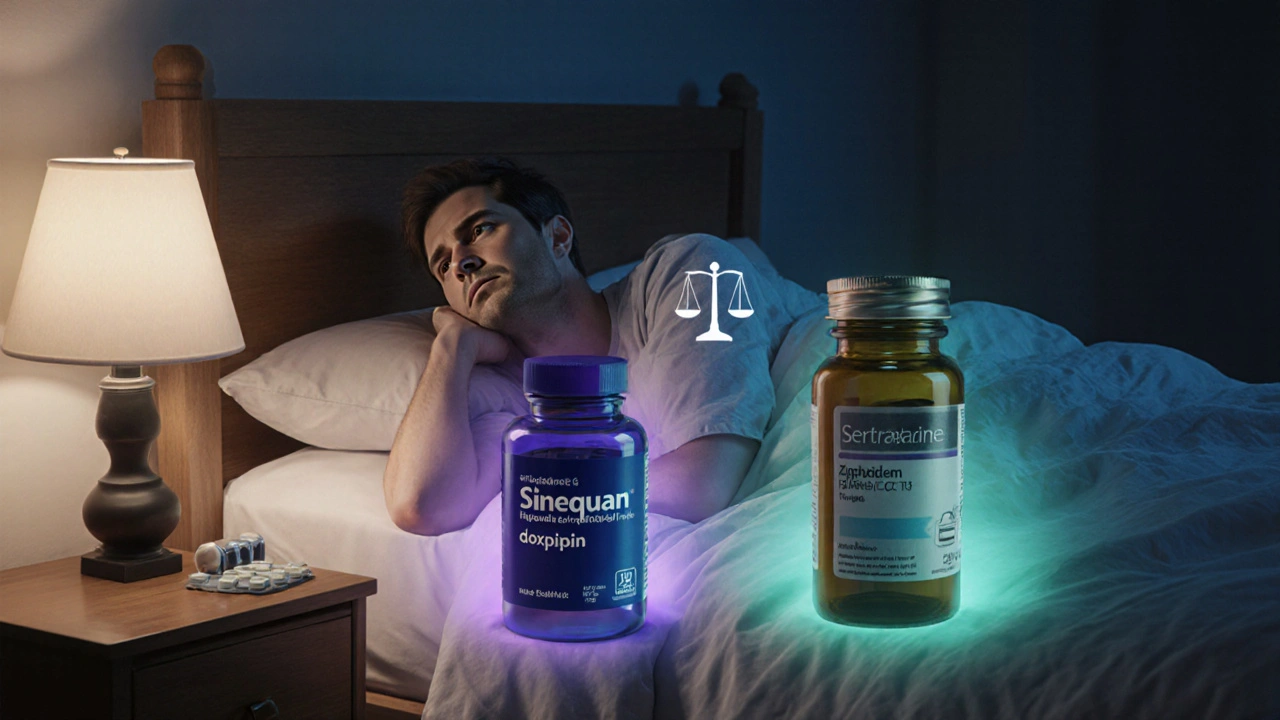You're probably wondering why some allergy pills make you feel sleepy while others don't. The sleepy ones belong to the sedating antihistamine group. They block histamine, the chemical your body releases during an allergic reaction, and also cross into the brain, which is why they cause drowsiness. This guide breaks down the basics, names the most common drugs, and tells you when a sedating antihistamine might be the right choice.
Most people recognize diphenhydramine – the active ingredient in Benadryl – as the classic sleepy antihistamine. It works fast, so it's a go‑to for sudden allergy attacks, bug bites, or even occasional insomnia. Hydroxyzine (Atarax, Vistaril) is another option; doctors often prescribe it for anxiety, itching, or as a pre‑med before surgery. Chlorpheniramine and brompheniramine are older drugs you might see in cold‑medicine combos; they also cause drowsiness but are less potent than diphenhydramine.
These medications share a few traits: they are taken orally, they start working within 30 minutes, and their effects can last 4‑6 hours. Because they affect the brain, they should be used with care when driving, operating machinery, or doing anything that requires alertness.
If you need quick relief from itchy hives, a runny nose, or watery eyes, a sedating antihistamine can be a smart pick – especially if you don't have to stay awake afterward. They’re also handy for night‑time allergy symptoms because the drowsiness helps you fall asleep. Some people use diphenhydramine as an over‑the‑counter sleep aid, but it’s not meant for long‑term use; tolerance can build fast, and you may feel groggy the next day.
For chronic conditions like allergic rhinitis, doctors usually recommend non‑sedating antihistamines (like cetirizine or loratadine) to avoid constant sleepiness. However, if you have severe itching from eczema or a reaction to a medication, a short course of hydroxyzine might be prescribed to calm the itch and help you relax.
Always check the label for other active ingredients. Many cold medicines combine a sedating antihistamine with a decongestant or cough suppressant, which can increase side effects. If you have glaucoma, enlarged prostate, or heart disease, talk to your pharmacist before taking these drugs, as they can worsen those conditions.
Dosage is straightforward: adults typically take 25‑50 mg of diphenhydramine every 4‑6 hours, not exceeding 300 mg per day. Hydroxyzine is usually prescribed at 25‑100 mg once or twice daily, based on the reason for use. Stick to the recommended amount – more won’t make the allergy better but will make the drowsiness worse.
Finally, remember that alcohol magnifies the sleepy effect. Mixing a sedating antihistamine with booze can lead to dangerous impairment. If you need to stay sharp, choose a non‑sedating option or wait until the antihistamine wears off before drinking.
In short, sedating antihistamines are a useful tool for fast allergy relief and occasional sleep support, but they come with a predictable side effect: drowsiness. Use them wisely, follow dosage instructions, and avoid risky combos. Your body will thank you for the relief without the unwanted hang‑over of fatigue.

Compare Sinequan (doxepin) with other sleep‑aid and antidepressant options. Learn mechanisms, dosing, side‑effects, and how to pick the best alternative for your needs.
read more